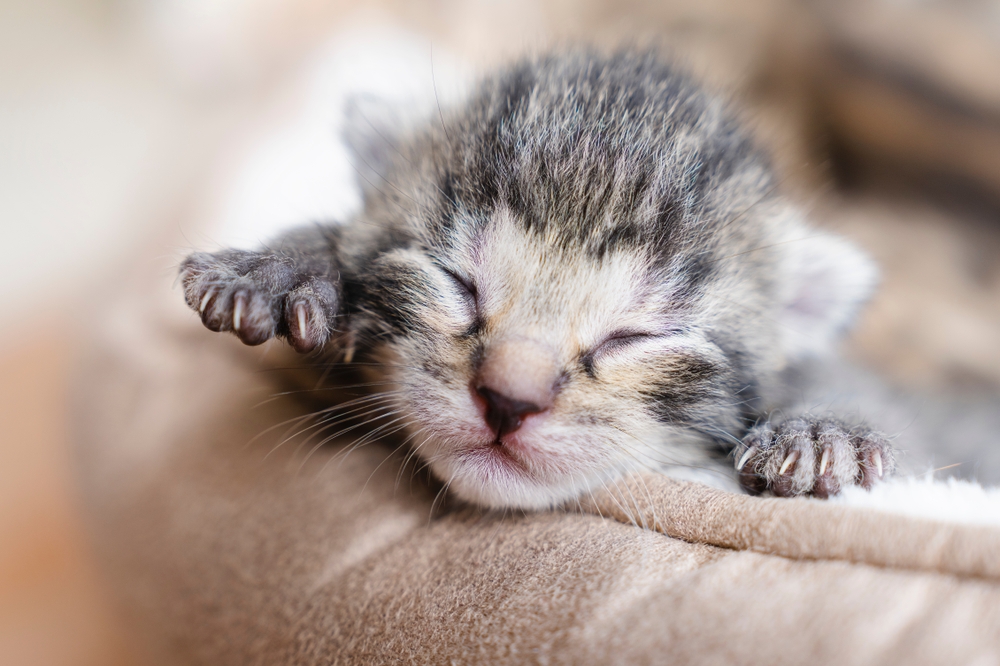Kitten season has arrived, bringing with it an irresistible wave of feline cuteness. However, behind the scenes, animal rescues and shelters are dealing with an influx of pregnant cats and their litters, putting a strain on their already limited resources.
According to Stephanie Filer, executive director of Shelter Animals Count, “Kitten season is that concept of cats, particularly community cats, reproducing at higher numbers.” This increase in reproduction normally takes place from April until late October, with May and June being the busiest months. During this period, shelters experience a significant increase in the number of kittens in need of care, exacerbating the difficulties faced by animal welfare organizations.
The strain on shelters: challenges faced during kitten season
The flurry of kittens puts a major strain on animal shelters and rescue centers, which are already at capacity. “Animal shelters and rescues are already at critical mass and have been for years, and kitten season adds immense strain on existing organizations and resources,” Filer said. The increase in kitten admissions has resulted in higher euthanasia rates and poorer outcomes for these fragile animals.
Shelter Animals Count statistics revealed a troubling trend, with a 15 percent increase in negative outcomes for animals in 2023 compared to the previous year. The fate of kittens is particularly concerning, with 13 percent of those under five months old being euthanized or dying from other unfortunate circumstances. Despite efforts to ease these issues, the numbers continue to climb, highlighting the importance of addressing the underlying causes of the problem.
Effective strategies: how to reduce the pressure on animal welfare
Despite the obstacles of kitten season, preventive methods have emerged as viable strategies for minimizing the number of cats and kittens in need. Community cat care initiatives, such as Trap-Neuter-Return (TNR) programs, have shown potential for stabilizing cat populations and improving general welfare.
TNR programs provide vital veterinary care to free-roaming cats, such as spaying or neutering, immunizations, and ear-tipping to indicate sterilization status. These activities not only prevent the birth of new litters, but they also improve the health of the current neighborhood cat populations.
Filer highlights the need for community involvement in tackling the issue, saying, “There’s a thing in nature called the vacuum effect, where the litter size that animals have is determined by the number of animals that exist within that area.” Communities can help reduce the number of stray and feral cats by introducing TNR programs and encouraging responsible pet ownership.
Taking action: ways to make a difference during kitten season
As kitten season approaches, individuals can proactively support animal welfare efforts and reduce the burden on shelters and rescues. Here are some useful approaches to make a difference:
1. Spay and neutering
To avoid unwanted litters and curb overpopulation, spay or neuter your pet cats before the age of four months.
2. Adoption
Consider adopting a kitten from a shelter or rescue group to give it a loving home and help them continue their important work in caring for endangered animals.
3. Fostering
Sign up to foster kittens through your local shelter or rescue organization, providing temporary care and socialization until they are ready to adopt.
4. Donations
To help shelters and rescues meet the demands of their rising populations, provide kitten care products such as formula, warmers, bottles, and cleaning supplies.
5. Community involvement
Volunteer with local Trap-Neuter-Return programs to help humanely manage free-roaming cat populations and prevent additional litters.
Individuals may help assure a better future for cats and kittens in need by working together and advocating for responsible pet ownership.
While kitten season poses enormous obstacles for animal welfare organizations, it also provides an opportunity for communities to band together and have a positive impact. We can help felines by taking proactive actions including spaying and neutering, adoption, fostering, and community engagement. Together, we can make a difference by ensuring that every kitten receives the care and compassion it deserves.












